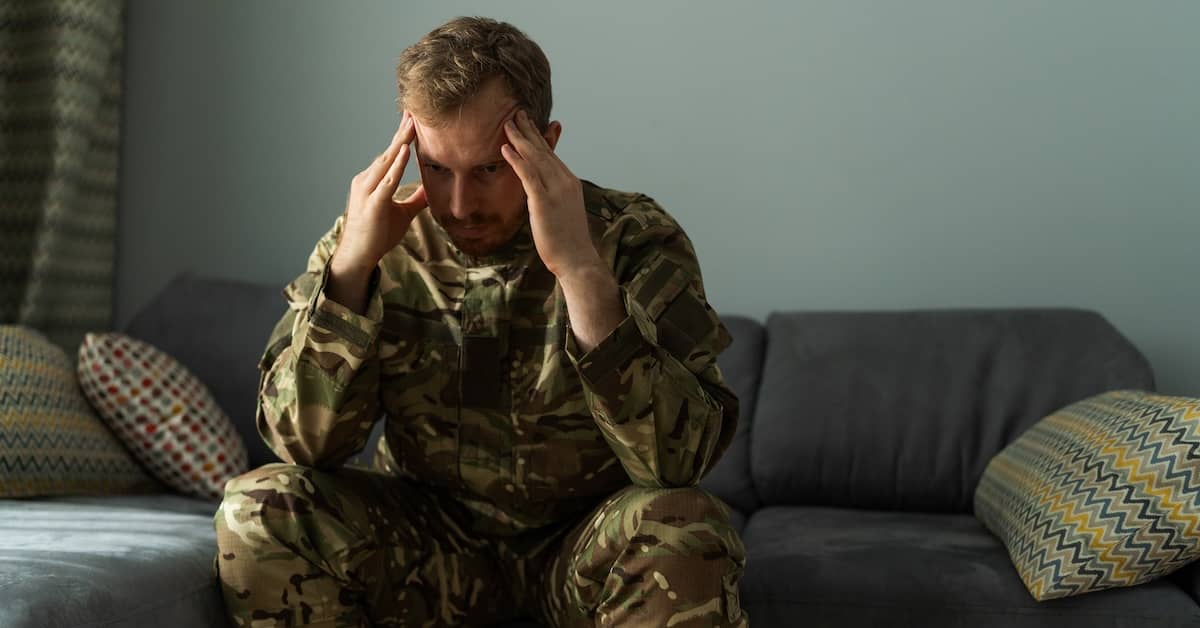The VA rating for PTSD plays a critical role in determining the compensation veterans receive for the psychological impact of their service. Post-Traumatic Stress Disorder is one of the most commonly claimed mental health conditions, and the rating you’re assigned can significantly affect your access to financial support, health care, and other vital VA benefits.
At VetLaw, our experienced veterans disability attorneys focus exclusively on helping former servicemembers navigate this complex process. Whether you’re filing your first claim, seeking a rating increase, or appealing an unfair decision, we bring the legal knowledge and personal commitment needed to fight for the VA rating for PTSD you deserve.
Understanding the VA PTSD Rating System
The VA rates PTSD under Diagnostic Code 9411, according to the General Rating Formula for Mental Disorders found in 38 CFR § 4.130. Ratings are assigned in 10% increments: 0%, 10%, 30%, 50%, 70%, and 100%. These percentages reflect the severity of symptoms and their impact on your occupational and social functioning.
The higher the rating, the more severe the impairment. A 0% rating means the condition has been diagnosed but is not severe enough to impair functioning or require continuous medication. A 100% rating reflects total occupational and social impairment.
VA PTSD Rating Scale: Symptoms and Examples
PTSD ratings can help provide a general idea, but it’s not always clear how those numbers play out in everyday life. The examples below help show what kinds of symptoms and daily challenges the VA typically connects to each rating level.
- 0%: PTSD is formally diagnosed, but symptoms do not interfere with work or social life.
- 10%: Symptoms are mild and only interfere during periods of significant stress. Medication may control symptoms.
- 30%: Occasional issues with work efficiency. Symptoms might include sleep disturbances, mild memory loss, or anxiety.
- 50%: Reduced reliability and productivity. Symptoms can include frequent panic attacks, impaired memory, and difficulty maintaining social and work relationships.
- 70%: Severe social and occupational impairment. Common symptoms include suicidal ideation, near-continuous panic or depression, impaired impulse control, and inability to maintain relationships.
- 100%: Total impairment. Veterans at this level may experience persistent hallucinations, disorientation, inability to perform daily living activities, or pose a persistent danger to themselves or others.
What Is the “Typical” VA Rating for PTSD?
While there is no guaranteed rating for PTSD, recent VA data suggests that the average VA rating for PTSD is approximately 50%, while the most common rating among veterans with service-connected PTSD is 70%.
Many veterans at the 70% rating level deal with intense symptoms like suicidal thoughts, obsessive behaviors, extreme mood swings, and serious trouble holding a job or maintaining relationships.
How the VA Determines Your PTSD Rating
The VA evaluates several factors when determining a PTSD rating:
- Medical Diagnosis: You must have a current diagnosis of PTSD from a qualified mental health professional, such as a psychiatrist or psychologist.
- In-Service Stressor: You must show that a traumatic event occurred during your military service. This could include combat, assault, witnessing death, or other traumatic situations.
- Medical Nexus: A medical opinion must link your current PTSD to the in-service stressor.
- Symptom Severity: The VA assesses the frequency, intensity, and duration of your symptoms, as well as how they affect your ability to work and interact socially.
The Compensation & Pension (C&P) exam is a crucial part of this process. During this evaluation, the examiner will assess your symptoms and their impact on daily life. Being open and honest, even uncomfortably so, is critical to ensuring an accurate VA rating for PTSD.
Individual Unemployability and PTSD Ratings
If your PTSD significantly limits your ability to work but does not meet the criteria for a 100% rating, you may still be eligible for Total Disability based on Individual Unemployability (TDIU). This benefit allows veterans rated less than 100% (typically at 70%) to receive compensation at the 100% level if they are unable to maintain substantially gainful employment due to their PTSD.
Special Monthly Compensation (SMC) for Severe PTSD
In rare cases, veterans with PTSD may qualify for Special Monthly Compensation (SMC). This is an additional benefit awarded in situations where the severity of the condition requires aid and attendance, results in housebound status, or is paired with another serious disability.
To qualify, a veteran might:
- Be rated 100% for PTSD and 60% for another service-connected condition
- Be unable to leave their home
- Require daily assistance with activities of daily living
What to Do If Your PTSD Rating Seems Too Low
If you feel your VA rating for PTSD doesn’t reflect the true severity of your condition, you have options to appeal:
- Supplemental Claim: Submit new and relevant evidence (e.g., updated medical records or statements).
- Higher-Level Review: Request that a senior VA reviewer reconsider your claim without new evidence.
- Board Appeal: Have a Veterans Law Judge review your case; you may submit additional evidence to the Board of Veterans’ Appeals.
Speak with a VA Disability Lawyer Today for FREE
If you’re a veteran living with PTSD and you are uncertain whether your VA rating truly reflects your condition, VetLaw is here to help. Our VA disability lawyers understand how the VA works, and how to help you obtain the justice and compensation you deserve.
Contact us today online or at (336) 355-8387 for a FREE case evaluation and let us help you fight for the compensation you deserve.







